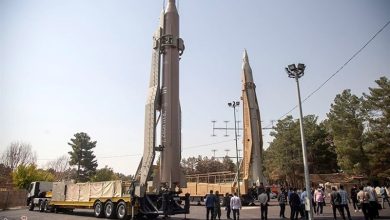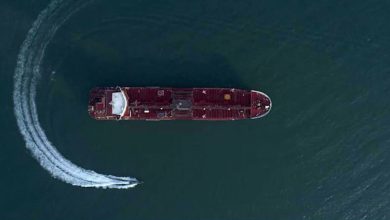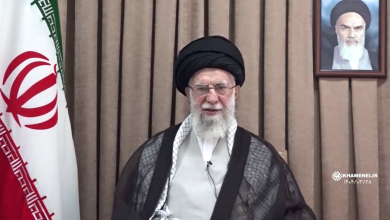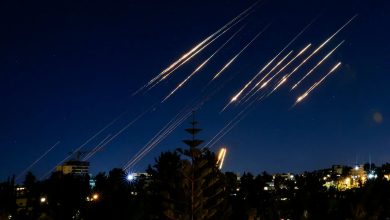French nuclear submarine on fire as another sub test-fires ballistic M51 SLBM missile
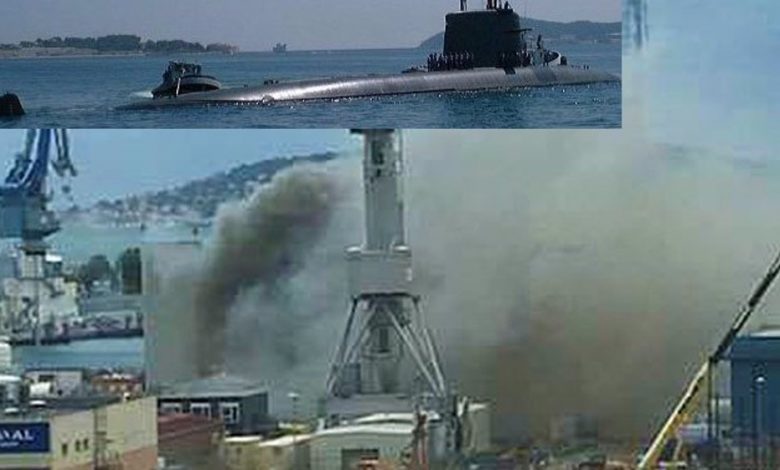
Fire has broken out and still raging onboard a French nuclear submarine docked at the Mediterranean port of Toulon, home to France’s largest naval base, while another French submarine test-fired a strategic ballistic missile amid the new US-initiated nuclear arms race.
Local authorities also insisted that the fire was under control, according to the report, which further said dozens of firefighters — assisted by specialized teams and a firefighting ship deployed from Marseille — responded to the incident on the Perle, which was docked at the naval base for repairs.
“The fire is under control. It will not spread, but it has not yet been put out,” said a spokeswoman for the Mediterranean prefecture on Friday as quoted in a Reuters report, further noting that no one was harmed by the fire and that no nuclear materials or weapons were on board the vessel.
However, no reason has yet been cited for the blaze on the 74-meter-long nuclear submarine that was launched in 1990 and began active service in 1993.
Meanwhile, a French defense ministry source was also cited as saying that Defense Minister Florence Parly would soon visit the Toulon naval base, which also hosts France’s nuclear-powered aircraft carrier Charles de Gaulle and the nuclear submarines as well as other warships that escort it on its global missions.
Nuclear submarine test fires huge M51 ballistic missile
The French Ministry of Armed Forces said the Navy Le Triomphant-class nuclear-powered ballistic missile submarine (SSBN) “Le Téméraire” test-fired an M51 submarine -launched ballistic missile (SLBM).

“The nuclear-powered Le Téméraire successfully fired an M51 strategic ballistic missile off Finistère,” Defense Minister Parly announced on Friday in a Twitter post.
The launch was carried out without a nuclear warhead off France’s Western coastal region of Brittany. The missile was tracked throughout its flight phase by radars and by the missile range instrumentation ship Monge (A601), landing several hundred kilometres away in the North Atlantic.
The M51 – which replaced the M45 in 2010 – weighs 52,000 kilograms with a 12-meter length and a diameter of 2.3 meters. Its operational range is reported to be 8,000 to 10,000 kilometres with a speed of Mach 25. The three-stage engine of the ballistic missile is directly derived from the solid propellant boosters of the European Ariane 5 space rocket.
Moreover, the M51 carries six to ten independently targetable (Multiple Independently targeted Reentry Vehicle) TN 75 thermonuclear warheads which, since 2015, have been replaced with the new Tête nucléaire océanique (TNO or oceanic nuclear warhead) warheads. The new warheads are reportedly maneuverable (Maneuverable Re-entry Vehicle) in order to avoid potential ballistic defenses.
The TNO also possesses an explosive yield that is estimated to be greater than or equal to the yield of the TN 75 warhead, 150 kilotons of TNT (kt) with a CEP (circular error probability) of 150 meters.
US leading nuclear arms race
This comes amid a recent report that showed the world’s nuclear-armed nations spent a record $73 billion on such weapons last year, with the US spending nearly as much as the eight other states combined.
The new spending figures — reflecting the highest expenditure on nuclear arms since the height of the cold war — have been estimated by the International Campaign to Abolish Nuclear Weapons (ICAN), which argues that the coronavirus pandemic underlines the wastefulness of the nuclear arms race.
The nine nuclear-armed countries spent a total of $72.9 billion in 2019, a 10-percent increase compared to the previous year – $35.4 billion of which was spent by the Trump administration, which accelerated the expansion of the US arsenal in its first three years while cutting expenditure on pandemic prevention.
The report came out just days prior to remarks by US President Donald Trump that his country intends to out-spend its military rivals across the globe, including Russia and China, with what he described as “super-duper missiles.”
Following Trump’s remarks, the Pentagon reluctantly acknowledged that it is developing hypersonic weapons with the defense department’s chief spokesman Jonathan Rath Hoffman stating in a Twitter post that the “Department of Defense is working on developing a range of hypersonic missiles to counter our adversaries.”
Back in 2018, Trump also directed the Pentagon to establish the Space Force – the first new US military branch in 72 years – calling for his country’s “dominance in space.”
In another move that further sparked fears of another global arms race, the American president pulled out the US from the landmark Intermediate-Range Nuclear Forces Treaty (INF) with Russia.
The deal was signed in 1987 to ban all land-based missiles with the range of up to 5,500 kilometres.
Russian nuclear-powered sub enters service amid arms control fears
Russia placed its new most-advanced nuclear-powered submarine into service on Friday at a time of rising nuclear weapons race between Moscow and its Western rivals.
Russian defense ministry announced during Russia Day celebrations that it had enrolled into the navy the Knyaz Vladimir (Prince Vladimir) – designed to carry Bulava intercontinental nuclear missiles.
The development came amid the persisting rift between Moscow and Western powers over Ukraine and fears of an escalating arms race following the demise of the INF after the US in August 2019 abandoned the accord that banned the deployment of short and intermediate range missiles.
The last major nuclear arms control treaty between Moscow and Washington known as the New START treaty, which is due to expire in 2021, limits the number of strategic nuclear warheads the world’s two biggest nuclear powers can deploy.
The Russian Borei-A (Boreas) class submarine is the first upgraded 955A model and one of the centerpieces in President Vladimir Putin’s plans to upgrade the nuclear-powered fleet.


